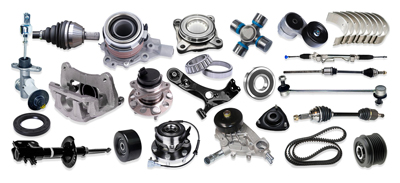In modern cars and mechanical systems, the collaboration between the flywheel and engine plays a crucial role. Their synergy not only enhances power output but also significantly improves fuel efficiency. The application of flywheel technology, particularly in hybrid powertrains and high-efficiency engines, has become a key factor in boosting performance and energy savings.
1. Principle of Flywheel Function
A flywheel is a rotating mechanical device, typically made of metal, installed in the engine’s drivetrain. Its primary function is to store and release mechanical energy. As the engine operates, the flywheel accumulates energy through rotation and releases it when the engine operates at lower loads or speeds, helping maintain smooth engine operation. The flywheel smooths out the power output of the engine, preventing power fluctuations, ensuring stable engine performance.
2. Improving Engine Efficiency
The flywheel helps the engine maintain a balanced power output by storing excess energy and releasing it when needed. This balance reduces energy loss caused by load fluctuations, thereby improving engine efficiency. Particularly in driving conditions that involve frequent acceleration and deceleration, the flywheel for car reduces the load on the engine, resulting in lower fuel consumption.
3. Fuel Efficiency Benefits
The use of a flywheel helps the engine maintain power output while reducing unnecessary fuel consumption. As the engine operates, the flywheel stores excess energy and releases it when needed, decreasing the demand for fuel. For example, in hybrid systems, the flywheel can replace part of the engine’s power needs, reducing fuel consumption by releasing stored energy. The introduction of flywheel technology reduces the strain on the engine during acceleration and operation, leading to improved overall fuel efficiency.
4. Power Enhancement
The flywheel’s energy storage capability can also provide a boost of power when needed, especially during acceleration. It can quickly release stored energy, allowing the engine to deliver higher power output in a short period. This is crucial for improving the vehicle’s acceleration performance, particularly in scenarios requiring rapid response, such as merging onto highways or overtaking. Moreover, flywheel technology is widely used in racing and high-performance vehicles to enhance power response and speed.
5. Reducing Engine Load and Extending Lifespan
By stabilizing the engine’s operation, the flywheel not only boosts efficiency but also reduces engine strain, preventing frequent energy fluctuations. Stable operation reduces wear and tear on engine components, thus extending the engine’s lifespan. The engine no longer needs to constantly shift between high and low load states, helping reduce wear and the need for frequent maintenance or part replacements.
6. Flywheel Applications in Hybrid and Electric Vehicles
In hybrid and electric vehicles, flywheel technology is increasingly used, especially in providing short-term acceleration energy and recovering braking energy. The flywheel can convert kinetic energy from braking into stored energy, which is then released during acceleration to provide additional power output. In such applications, the car engine flywheel not only enhances vehicle performance but also reduces energy waste, improving overall energy efficiency.
The synergy between the flywheel and engine provides modern vehicles with a more efficient and energy-saving solution. By storing and releasing energy, the flywheel enhances engine performance, reduces fuel consumption, and boosts power output, optimizing the driving experience. In the future, flywheel technology will play an even greater role in energy conservation, performance enhancement, and be a driving force behind the progress of automotive technology.

 Twitter
Twitter
 Facebook
Facebook
 Linkedin
Linkedin
 Google +
Google +



